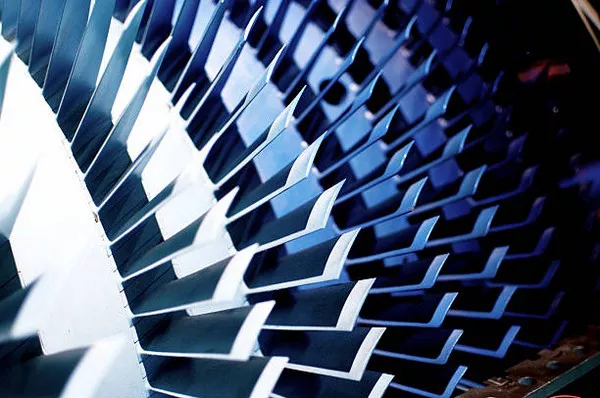Pre-Charged Pneumatic (PCP) rifles represent the pinnacle of air rifle technology, providing shooters with consistent power and exceptional accuracy. Unlike traditional spring-piston air rifles, PCP rifles use compressed air stored in a reservoir to propel pellets. To operate these rifles effectively, it’s crucial to maintain a sufficient air supply, which raises the question: can you fill a PCP rifle with an air compressor? This article delves into the details of filling a PCP rifle with an air compressor, including the types of compressors available, their advantages and limitations, and best practices for ensuring a safe and efficient filling process.
Understanding PCP Rifles
PCP rifles are designed to operate with high-pressure air. The air reservoir in these rifles can typically hold pressures ranging from 2,000 to 3,000 psi (pounds per square inch). The key to utilizing a PCP rifle effectively is maintaining this pressure to ensure optimal performance. Unlike break-barrel or pump-action air rifles, PCP rifles require an external source to replenish their air supply, which is where air compressors come into play.
Types of Air Compressors for PCP Rifles
There are several types of air compressors suitable for filling PCP rifles, each with its unique features, advantages, and limitations:
1. High-Pressure Air Compressors
High-pressure air compressors, often referred to as “PCP compressors,” are specifically designed to fill PCP rifle reservoirs. These compressors can achieve the high pressures required for PCP rifles and come with various features to facilitate the filling process.
Features:
High Pressure Capability: These compressors can achieve pressures of up to 4,500 psi, making them compatible with most PCP rifles.
Built-in Cooling Systems: Many high-pressure compressors are equipped with cooling systems to manage heat generated during the compression process.
Automatic Shutoff: Advanced models include automatic shutoff features to prevent overfilling and ensure safety.
Portable and Stationary Models: Depending on your needs, you can choose between portable models for field use or stationary models for home use.
Advantages:
Precision: Designed specifically for PCP rifles, ensuring accurate and safe filling.
Efficiency: Capable of quickly filling high-pressure air tanks.
Convenience: Many models are user-friendly with automatic controls.
Limitations:
Cost: High-pressure compressors can be expensive, with prices ranging from a few hundred to several thousand dollars.
Maintenance: Regular maintenance is required to keep these compressors in optimal working condition.
2. Bigger Shop Compressors with Regulators
Some shooters use larger shop compressors equipped with high-pressure regulators to fill their PCP rifles. These compressors are typically used in industrial settings and can be adapted for personal use.
Features:
Powerful Compression: Capable of producing high pressures.
Regulators: Equipped with pressure regulators to ensure safe filling.
Durability: Built to handle continuous use and high workloads.
Advantages:
High Capacity: Can fill multiple PCP rifles or larger air tanks.
Versatility: Useful for other applications beyond filling PCP rifles.
Limitations:
Complex Setup: Requires additional equipment and modifications for safe use with PCP rifles.
Size and Portability: Larger and less portable than dedicated PCP compressors.
3. Hand Pumps
Manual hand pumps are another option for filling PCP rifles. These pumps use human power to compress air into the rifle’s reservoir.
Features:
Simplicity: Simple design with no electrical components.
Affordability: Generally less expensive than electric compressors.
Portability: Easy to transport and use in the field.
Advantages:
Cost-Effective: Lower initial investment.
Reliability: Fewer mechanical components that can fail.
Limitations:
Effort: Requires significant physical effort, especially for high-pressure fills.
Time-Consuming: Filling a large tank can be time-consuming.
Best Practices for Filling a PCP Rifle
Regardless of the compressor type you use, adhering to best practices is crucial for ensuring safety and efficiency:
1. Check the Compressor Specifications
Ensure that the compressor you use is capable of reaching and maintaining the pressure required for your PCP rifle. Verify that it has the necessary safety features, such as pressure relief valves and automatic shutoff systems.
2. Prepare the Rifle and Compressor
Before starting the filling process, inspect both the PCP rifle and the compressor for any signs of wear or damage. Ensure that all connections are secure and that the air reservoir is free from any obstructions or contaminants.
3. Use Quality Equipment
Invest in high-quality hoses, connectors, and filters to prevent air leaks and ensure clean air delivery. High-quality equipment also reduces the risk of accidents and extends the lifespan of both your rifle and compressor.
4. Follow Manufacturer Instructions
Always follow the manufacturer’s instructions for both your PCP rifle and the air compressor. This includes adhering to recommended pressure limits, maintenance schedules, and safety precautions.
5. Monitor the Filling Process
Keep a close eye on the pressure gauge during the filling process to prevent overfilling. Many modern compressors come with automatic shutoff features that stop the filling process when the desired pressure is reached.
6. Allow for Cooling
High-pressure filling generates heat, which can affect the performance of both the rifle and the compressor. Allow the equipment to cool down between filling sessions to prevent overheating and extend the lifespan of your equipment.
See Also How Much To Fix An Air Compressor
Conclusion
Filling a PCP rifle with an air compressor is a practical and efficient method for maintaining the necessary air pressure for optimal performance. Whether you choose a dedicated high-pressure compressor, a larger shop compressor with a regulator, or a manual hand pump, understanding the features, advantages, and limitations of each option will help you make an informed decision. By following best practices and adhering to safety guidelines, you can ensure a safe and effective filling process, enhancing your shooting experience and extending the life of your PCP rifle.

